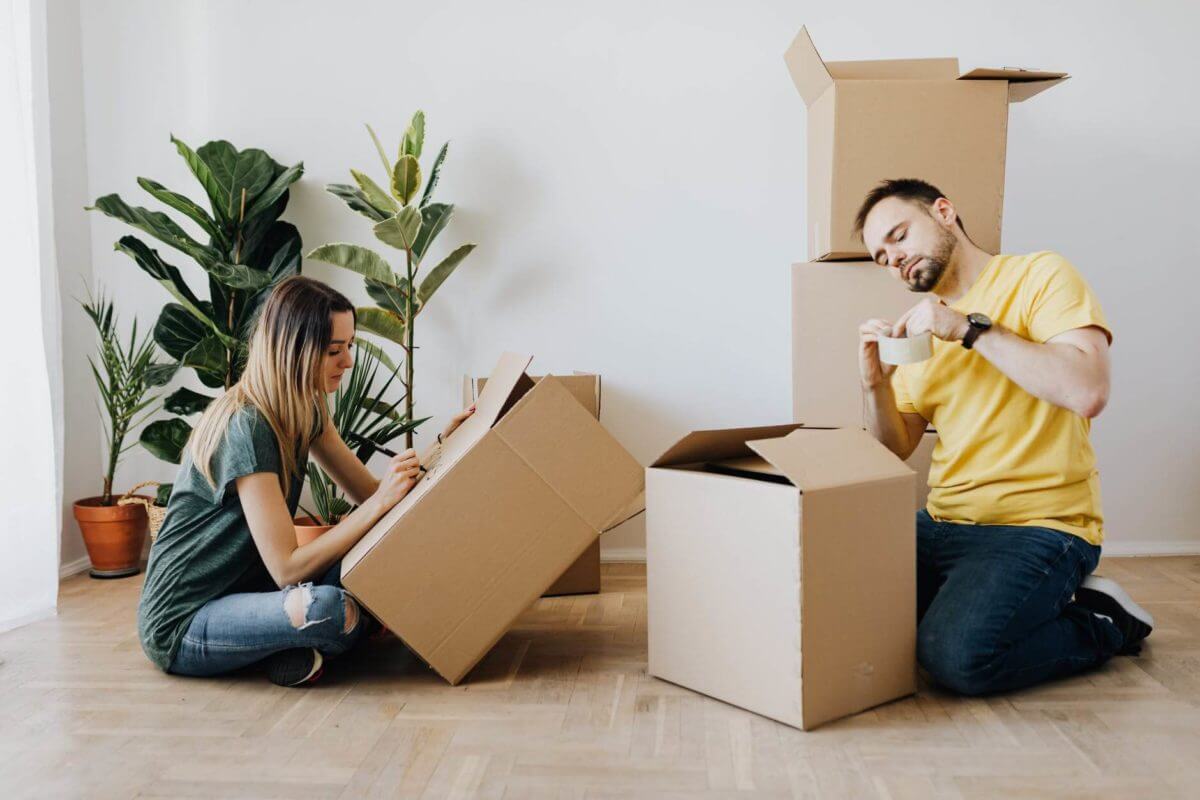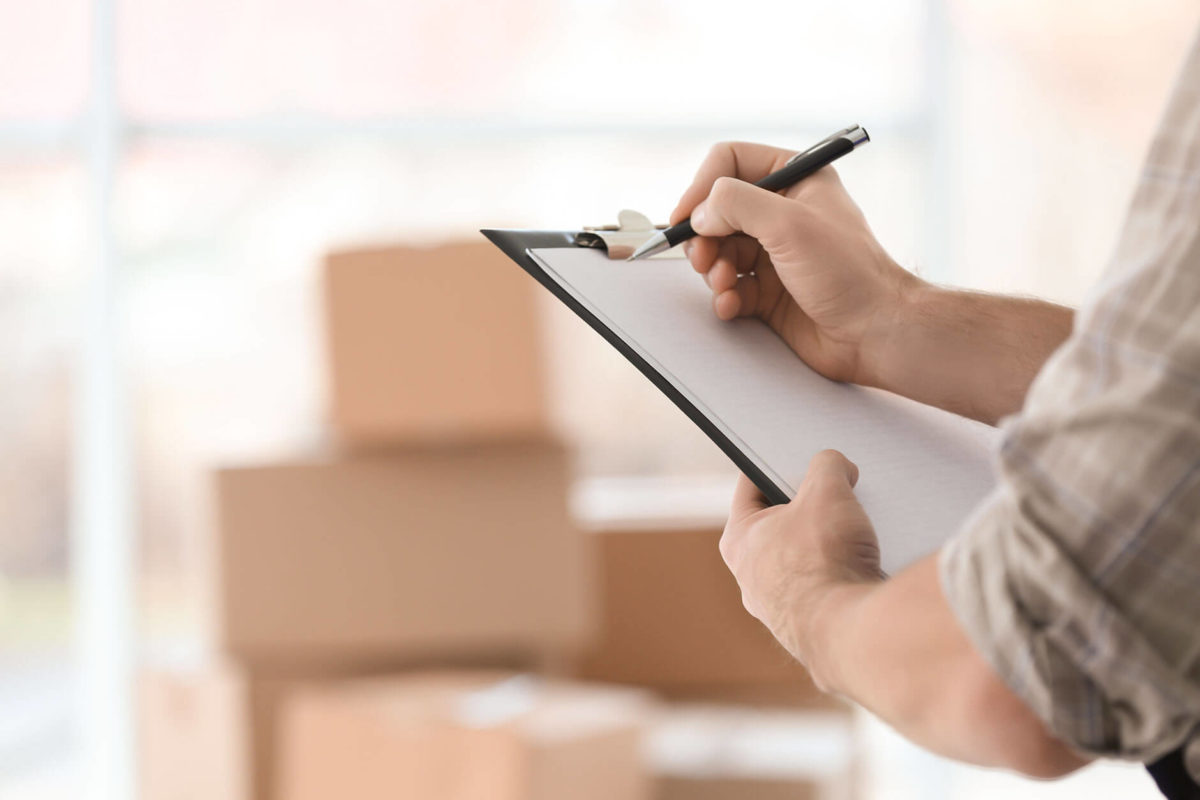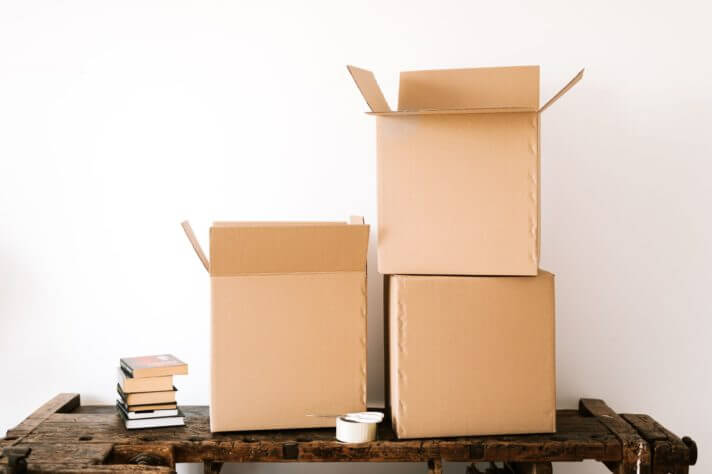Moving can be both exciting and overwhelming, and packing up all of your belongings can add an extra layer of stress. So, what’s the easiest way to pack for a move? With the right approach, protecting your belongings doesn’t have to be a daunting task. In fact, there are several easy and efficient ways to simplify the entire process and ensure that your belongings arrive at your new home safe and sound.
One of the biggest issues when cross-country moving is how to pack everything easily
What’s the Easiest Way to Pack for a Move – Try to Stay Organized
When it comes to the packing process, staying organized is key to making the process as easy as possible. However, organizing the wrapping process accordingly is not always as easy as many think. After all, relocating can be a chaotic and stressful time, even if you have a to-do list.
Many people underestimate the number of belongings they have, which can lead to a feeling of overwhelm and make it challenging to create a packing plan. Additionally, relocating often requires coordinating with multiple parties, such as cross-country movers, landlords, or real estate agents, which can add to the chaos and make it challenging to keep track of everything.
How to Pack Efficiently – Create an Inventory of Items for Moving Cross Country
There are many things to consider during the relocation, but creating an inventory of your items is an essential step to packing efficiently. Even if you plan to book a professional cross-country moving service, you still need to get some tips for wrapping quickly, right? Start by making a detailed list of all the items you plan to bring with you, including furniture, appliances, and personal belongings.
This will help you determine how many boxes you’ll need and allow you to create a wrapping plan based on the size and weight of your items. After all, if the wrapping process is efficient, in many cases, it surely means the entire relocation will be efficient too.
Keep organized with the inventory list
Sort and Categorize Items You Want to Pack
Sorting and categorizing items allows you to assess what you have, prioritize what you need, and eliminate what you don’t. So, after you hire one of the best cross-country moving companies, start by sorting items into categories such as clothing, kitchenware, electronics, and furniture. Then, go through each category and decide which items you want to keep, donate, sell, or get rid of.
Label Boxes Adequately for Efficient Cross-Country Moving
Labeling each box will make it easier to find and unpack items once you arrive at your new home. Place a brief description of the contents on every box, such as “books,” “kitchenware,” or “clothing.” You can also include additional details such as “fragile” or “heavy” if applicable. Next, label each box with the room it belongs in, such as “living room,” “bedroom,” or “kitchen.”
Consider using color-coded labels for each room to make it even easier to identify where each box belongs. By labeling boxes for efficient cross-country moving, you can streamline the unpacking process and start enjoying your new home sooner. However, if you wish to learn more about labeling, we at Cross Country Moving Company have plenty of wrapping tips and tricks that we’ll be glad to share with you.
Ensure each box is properly labeled
Use Appropriate Materials When Packing to Move
Using appropriate wrapping materials is essential for ensuring that your belongings arrive at your new home safely and securely. While it can be tempting to use whatever boxes and different materials you have on hand, taking the time to choose the right supplies can make all the difference in protecting your items during transit. Here’s what you need to know about the wrapping supplies and materials
Find the Right Boxes Before You Start to Pack, and Moving Becomes Much Easier
While it may be tempting to pack everything in large boxes, this can make them heavy and difficult to move, increasing the risk of damage or injury. On the other hand, using boxes that are too small can lead to overpacking, which can cause items to become damaged or lost during transit. So, ensure to choose the right size boxes and utilize relocation hacks, and you can streamline your relocation and ensure that your belongings arrive at your new home safely and efficiently.
Foam Peanuts and Packaging Paper Are Great for Padding
When it comes to preparing fragile items for a move, foam peanuts and packaging paper are two great options for padding. Foam peanuts, also known as packing peanuts, are lightweight and provide excellent cushioning for fragile items such as glassware, electronics, and artwork. They are also affordable and easy to use – simply pour them into the bottom of the box and around the item being packed.
Packaging paper, on the other hand, is a more eco-friendly option and can be used to wrap fragile items before placing them in the box. It also works well for filling gaps between items to prevent shifting during transit. However, it’s important to avoid using regular newspapers, as they can leave ink stains on some items. If you still wish to proceed with them, be sure to use a layer of tissue or plastic wrap as a barrier.
Use the Right Wrapping Supplies
There are several options to choose from, including bubble wrap, stretch wrap, and packing paper. When using wrapping supplies, be sure to wrap each item securely and label boxes as fragile if necessary. By using the right wrapping supplies, you can protect your belongings and ensure that they arrive at your new home in the same condition as when you packed them.
Pack Heavier Items at the Bottom of Boxes and Lighter Ones on Top
Placing heavier items at the bottom of boxes and lighter ones on top is an important rule to follow. This helps to distribute the weight evenly and prevent damage to fragile items. Start by taking care of heavier items such as books, small appliances, and canned goods and placing them at the bottom of the box. This creates a sturdy base for the rest of the items and prevents the box from becoming top-heavy.
Then, layer lighter items such as clothing, bedding, and towels on top of the heavier items. Be sure to fill any gaps with packing paper or foam peanuts to prevent shifting during transit.
When protecting fragile items, wrap them in bubble wrap or packing paper and place them on top of the lighter items.
Heavier objects should go on the bottom of the box
Make Sure to Seal All Drawers Without Emptying Them
When taking care of furniture, it’s important to seal all drawers in dressers and desks, even if they still contain items. Leaving items in drawers during the relocation can save time and effort, but it’s important to seal them properly to prevent the contents from spilling out or getting damaged during transit.
To seal drawers, wrap them tightly with stretch wrap, ensuring that the wrap covers the entire drawer and any openings. This will help keep the items inside secure and prevent them from shifting during transport. Be sure to label the outside of the drawer with its contents to make unpacking easier. When you arrive at your new home, simply remove the stretch wrap, and you’re ready to go. By sealing drawers without emptying them, you can save time and effort during the wrapping process while ensuring that your items arrive at your new home safe and secure.
Utilize Wardrobe Boxes for Clothes So They Don’t Get Wrinkled During Transport
Utilizing wardrobe boxes is a great option to prevent them from getting wrinkled during transport. Wardrobe boxes are tall boxes with a built-in hanging rod, allowing you to hang clothes directly from your closet and transport them easily.
This is one of the most efficient wrapping tips for clothes that keep them hanging and prevents them from being folded or compressed, which can cause wrinkling or damage. To pack clothes with hangers, simply group several items together on a hanger, such as shirts or pants, and cover them with a garbage bag or plastic dry cleaning bag. Once covered, you can leave the hanger hooks exposed and bundle multiple hangers together for easy transportation.
Use long-distance moving services, and don't worry about your clothes
Don’t Forget to Pack Essential Things and Documents Separately
It’s important not to forget to wrap essential things and documents separately. These items should be packed in a separate bag or box that you keep with you during the move rather than in the truck. This ensures that you have easy access to them throughout the relocation and prevents them from getting lost or damaged.
When it comes to your important documents, many people make the common mistake of not organizing them. That way, some of the paperwork gets easily left behind. Here are some of the most important documents that you need to keep with you:
- ID and passport,
- Birth certificate,
- Social security card,
- Financial documents.
What to Pack in the “Essentials” Bag or Box
Essential things may include medications, toiletries, a change of clothes, and any items needed for children or pets. It’s a good idea to create a checklist of these essential items to ensure that nothing is left behind. Not only will you reduce relocation stress, but you’ll ensure that you have everything needed to settle into your new home.
Place your essentials in a separate box
Take Pictures of Electronics Before Unplugging Them
Taking pictures of your electronics before unplugging them is a smart move when organizing a relocation. This is especially important if you plan to set up the electronics yourself at your new home. You can also use the pictures to ensure that all cables and wires are properly connected after the move.
Take pictures of the electronics and all the cables
Consider Hiring a Long-Distance Moving Company if You Need Any Help With the Relocation Process
If you’re planning a cross-country move and need help, it’s worth considering hiring a long-distance moving company. Relocation companies specialize in helping people transport their belongings safely and efficiently, and they can provide a range of cross-country moving services to meet your needs.
Cross Country Moving Company is here to help and simplify your relocation process with reliable services. Contact us today and see why we’re one of the top-rated relocation companies on the market.
Frequently Asked Questions About the Easiest Way to Pack for a Move
What Are the Best Packing Materials to Use for a Move?
Choosing the right materials is crucial for ensuring that your belongings arrive at your new home safely and securely. Some of the best packing materials to use for a move include sturdy cardboard boxes in a variety of sizes, packing paper, bubble wrap, packing peanuts, and packing tape.
How Can I Maximize Space When Packing?
To maximize space, you can try sorting and categorizing items, donating on Goodwill, or selling what you no longer need or use. Use vacuum storage bags to compress clothing, bedding, and linens, which can significantly reduce their size.
When Is the Best Time to Start Packing for a Move?
As a general rule, it’s best to start the wrapping at least four to six weeks before your relocation date. This will give you enough time to sort through your belongings, donate or sell what you don’t need, and wrap your remaining items in a systematic and organized way.
Should I Pack My Items Myself or Hire Long-Distance Movers?
If you have a small move and are on a tight budget, wrapping your items yourself can save money. However, if you have a larger move or limited time, hiring long-distance movers can be a worthwhile investment.
What's the Easiest Way to Label Boxes During a Move?
The easiest way to label boxes is to use a permanent marker to write a brief description of the contents on the top and sides of the box. Be sure to label each box with the name of the room it belongs in as well.
How Much Help Should I Enlist When Packing for a Move?
If you have a small relocation and are on a tight budget, you may prefer to wrap your items yourself with the help of family and friends (you can even throw a packing party). However, if you have a larger relocation or limited time, enlist the help of professional cross-country movers who have the experience and expertise to wrap your items safely and efficiently.
Is There Any Advice on How Best to Protect Fragile Items During a Move?
Be sure to wrap each fragile item individually in bubble wrap or packaging paper, and fill any gaps with packing peanuts or crumpled paper. Label boxes containing fragile items as “Fragile” to ensure that they are handled with care during the relocation.
Is There Anything Special That Needs to Be Done With Furniture When Moving?
Relocating furniture requires special care and attention to ensure that it arrives at your new home in good condition. Some tips for relocating furniture include disassembling large pieces such as beds and tables, removing drawers and cushions from couches and chairs, and wrapping furniture in blankets or plastic wrap to protect it during transit.
Are There Any Tips on Quick and Easy Unpacking After a Move Is Complete?
First, start by unpacking essential items, such as bedding, toiletries, and kitchen supplies, which will allow you to function normally in your new home. Next, unpack items from one room at a time, starting with the essential items and working your way down.
What Are Some Last-Minute Moving Tips That Could Make Things Easier?
There are several last-minute tips that can make the process easier. Create a “last-minute” box with essential items such as toiletries, a change of clothes, and important documents that you will need immediately upon arrival at your new home.














